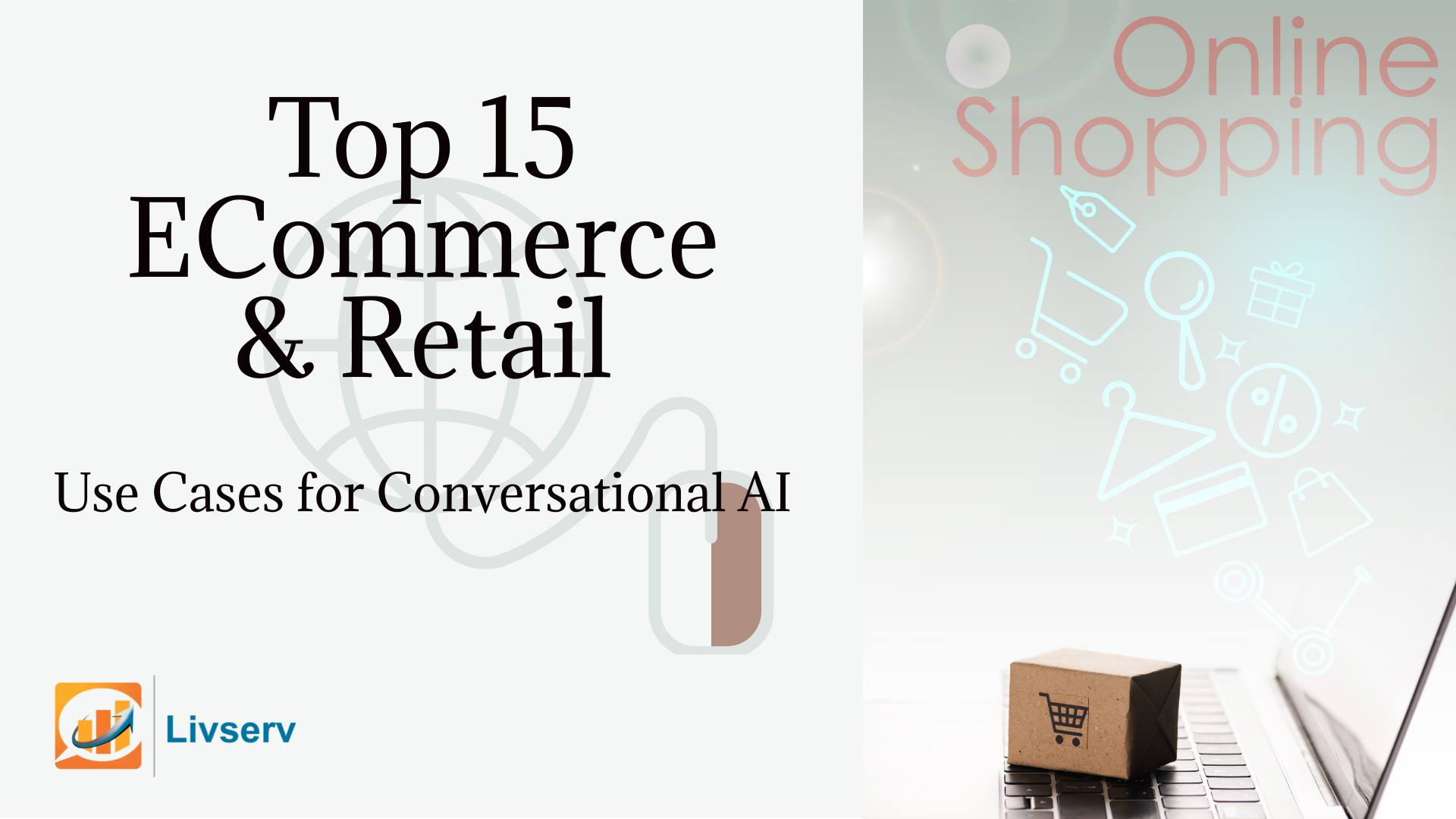The online shopping landscape is evolving rapidly, and businesses need to adapt to stay ahead of the curve. One of the most exciting trends in recent years is the rise of conversational AI chatbots. These virtual assistants are transforming the way e-commerce and retail businesses interact with their customers, offering a personalized and engaging experience that’s driving sales and loyalty.
Benefits of AI Chatbots for E-commerce and Retail
From answering product-related questions to assisting with the checkout process, these virtual assistants ensure a smooth and efficient buying experience.
Integrating chatbots with payment gateways allows users to make purchases without leaving the chat interface, reducing friction and increasing conversion rates.
This opens up numerous benefits attached to using conversational AI chatbots in your e-commerce or retail business, including:
- Improved customer service: Chatbots can provide immediate assistance to customers, answering questions about products, orders, and returns. This can free up your human customer service team to focus on more complex issues.
- Increased sales and conversions: Chatbots can help guide customers through the buying process, recommending products and offering personalized deals. This can lead to higher conversion rates and average order values.
- Reduced costs: Chatbots can automate many customer service tasks, such as answering frequently asked questions and resolving simple issues. This can save businesses money on customer service overhead.
- 24/7 availability: Chatbots are always available, even outside of business hours. This can help you capture leads and provide customer support at any time.
- Personalized experiences: Chatbots can collect data about customers’ preferences and use it to personalize their shopping experience. This can lead to increased customer satisfaction and loyalty.
Top E-commerce and Retail Use Cases for Conversational AI Chatbots:
There are many ways to use conversational AI chatbots in e-commerce and retail, here are a few examples:
| 1. Customer Support | 2. Product Recommendations | 3. Order Assistance |
| 4. Inventory Inquiries | 5. Promotions and Discounts | 6. Cart Abandonment Recovery |
| 7. Feedback and Surveys | 8. Returns and Exchanges | 9. Store Locator and Hours |
| 10. Size and Fit Assistance | 11. Voice Commerce | 12. Order Tracking |
| 13. Membership and Loyalty Programs | 14. Social Media Integration | 15. Holiday and Seasonal Campaigns |
1. Customer Support:
– Provide instant and round-the-clock customer support.
– Answer frequently asked questions about products, shipping, and returns.
– Resolve common issues, such as order tracking and account management.
Learn more about How to Use ChatGPT for a Customer Contact Center
2. Product Recommendations (Upsell and Cross-sell opportunities):
– Analyze customer preferences and behavior to offer personalized product recommendations.
– Suggest complementary items based on the customer’s browsing and purchase history.
3. Order Assistance:
– Assist customers in placing orders and completing transactions.
– Notify customers about order confirmations, shipping updates, and delivery status.
4. Inventory Inquiries:
– Allow customers to check product availability and stock levels in real time.
– Provide information about a particular product’s sizes, colors, and variations.
5. Promotions and Discounts:
– Share information about ongoing promotions, discounts, and special offers.
– Guide customers on how to apply coupon codes during the checkout process.
6. Cart Abandonment Recovery:
– Send reminders to users who abandoned their shopping carts, encouraging them to complete the purchase.
– Address concerns or provide additional information to overcome barriers to purchase.
Read more about Winning Back Your Cold Leads With WhatsApp Conversational Chatbots.
7. Feedback and Surveys:
– Collect feedback on products, services, and overall shopping experience.
– Conduct customer satisfaction surveys to gather insights for improvement.
8. Returns and Exchanges:
– Guide customers through the returns and exchange process.
– Provide information on return policies, timelines, and refund procedures.
9. Store Locator and Hours:
– Help customers find physical store locations using geolocation features.
– Provide store hours, contact details, and any special events or promotions at nearby stores.
10. Size and Fit Assistance:
– Assist customers in finding the right size and fit for clothing and other products.
– Offer size charts and personalized recommendations based on individual preferences.
11. Voice Commerce:
– Enable voice-activated shopping experiences, allowing customers to place orders or inquire about products using voice commands.
12. Order Tracking:
– Provide real-time updates on order status, shipping, and estimated delivery times.
– Allow customers to track their orders directly through the chatbot.
13. Membership and Loyalty Programs:
– Enroll customers in loyalty programs and provide information on membership benefits.
– Offer personalized rewards and promotions to loyal customers.
14. Social Media Integration:
– Integrate chatbots with social media platforms to facilitate product discovery and purchases directly through social channels.
15. Holiday and Seasonal Campaigns:
– Launch chatbot-driven campaigns for holidays and special occasions.
– Recommend gifts, share festive promotions, and create a personalized shopping experience.
By leveraging conversational AI chatbots in these use cases, e-commerce and retail businesses can enhance customer engagement, improve operational efficiency, and ultimately drive sales.
Whether it’s suggesting complementary items, showcasing promotions, or guiding users through the product catalog, chatbots enhance personalization at scale.
Getting Started with Conversational AI Chatbots:
If you’re interested in using conversational AI chatbots for your e-commerce or retail business, there are a few things you need to do:
- Define your goals: What do you hope to achieve with chatbots? Once you know your goals, you can choose the right platform and features.
- Develop your chatbot persona: Create a personality for your chatbot that is consistent with your brand.
- Train your chatbot: Teach your chatbot how to understand and respond to user queries.
- Test and iterate: Once your chatbot is up and running, test it and make adjustments as needed.
Read more about How to Train LLM for Sales: Build Effective Conversational AI
The Future of Conversational AI Chatbots
Conversational AI is an evolving tech. As chatbot technology continues to develop, we can expect to see even more sophisticated and personalized customer experiences.
However, conversational AI is not a replacement for human interaction, but rather a tool that can be used to enhance the customer experience. By using chatbots strategically, you can create a more personalized and engaging shopping experience for your customers, which will ultimately lead to success in the competitive world of e-commerce and retail.
Introducing Livserv.ai: Omnichannel Conversational AI Builder. Sign up for a free trial today!



